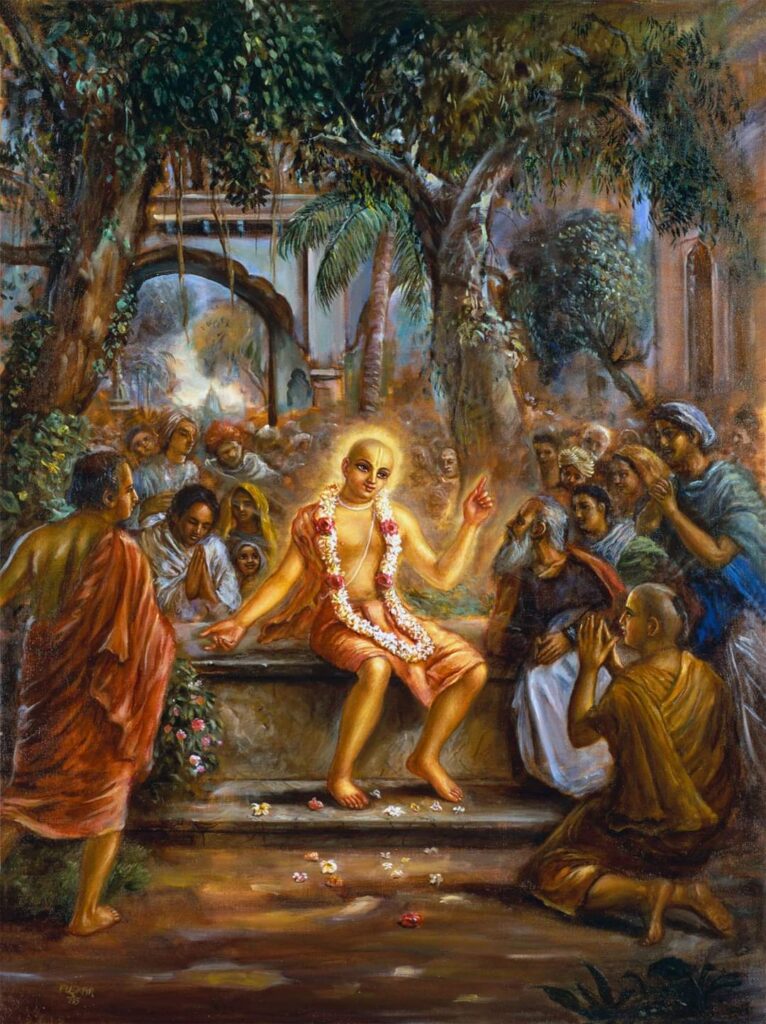Once, in a class, someone asked me: “Since all gurus in our movement are uttama-adhikari devotees, how can we understand when some of them fall?”

Once, in a class, someone asked me: “Since all gurus in our movement are uttama-adhikari devotees, how can we understand when some of them fall?”
This question was a little confusing. He started with a statement, saying that all gurus in our movement are pure devotees, then made another statement, saying that some of them fall, and then asked me to explain these two statements he himself made.
To me, this explains a lot about the contradictions we find in spiritual life. We make some incorrect assumptions or hear incorrect assumptions from others, and then become confused when we are confronted with a different reality. This leads to some form of cognitive dissonance that in turn makes us negate reality and refuse to acknowledge the obvious.
Believing all gurus or all authorities in our movement are completely self-realized uttama-adhikaris on the ultimate level of prema also reveals an institutionalized attitude that is not very positive. It implies that all authorities in our movement are perfect just because they are part of our movement, regardless of their personal qualities. It implies a layer of blind faith that is not very positive.
Are there some pure uttama-adhikaris serving as gurus in our movement? I’m sure there are. Are the majority of gurus in our movement uttama-adhikaris, self-realized souls? It’s possible, but I don’t have the tools to measure that. Are all gurus in our movement, in the past, present, and future uttama-adhikaris, perfect Vaishnavas? No. And the proof is that some were caught in quite condemnable acts in the past.
Once a sanyasi who I was translating, made an interesting point when confronted with a similar statement in one of his classes. He said it’s just like in a jewelry shop: all the ornaments sold there have a certain value, but it’s foolish to presume they are all of the same value. Some have diamonds or emeralds, some are gold of different gradations of purity, and some are made out of silver or other less expensive materials. Something may even be made out of plastic, although may still look nice on the outside.
In the past, the GBC used to “appoint” or “empower” gurus, but this approach became problematic when several of the appointed gurus started falling from regulative principles. Eventually, this system was abandoned in favor of the current system, where the GBC doesn’t empower or vault gurus, but just gives a vote of non-objection.
The way it currently works is that usually a senior devotee or preacher starts to attract a few followers, and eventually a few of them start asking for initiation. At this point, the devotee in question may apply to become an initiating guru in our movement. Representatives of the GBC then run some background checks, interview devotees, and so on, in an attempt to assert if the candidate is following the regulative principles, has good moral standards, good understanding of the sastras, etc. If these are confirmed they pass a vote of “non-objection”, which basically means they don’t have anything against him acting as a guru, and thus devotees who are interested may seek initiation from him.
The vote of non-objection given by the GBC is therefore not an uttama-adhikari or nitya-siddha stamp, but just a certificate that the candidate passed basic background tests. Anything beyond that is left to the disciples themselves to decide.
In this way, it’s now the responsibility of the disciple to choose who he or she wants to accept as a guru. There is no guarantee that everyone who initiates in our movement is a pure devotee, and thus one should choose carefully by hearing from different gurus and deciding who he or she can trust, and not just base the choice on external factors such as beauty, musical talent or number of disciples.
Another point is that contrary to what some may believe, there is no prohibition in the scriptures to devotees who are not at a uttama-adhikari level acting as gurus. A disciple is of course advised to look for a self-realized guru, and a devotee is not advised to accept disciples untill he or she attains an advanced level of spiritual realisation, but still, intermediate devotees or even neophytes may also initiate, provided they are acting as gurus to devotees who are lower than them in spiritual realization. This apparently contradictory point is explained by Srila Prabhupada in his purport to the 5th verse of Nectar of Instruction:
“In this verse Śrīla Rūpa Gosvāmī advises the devotee to be intelligent enough to distinguish between the kaniṣṭha-adhikārī, madhyama-adhikārī and uttama-adhikārī. The devotee should also know his own position and should not try to imitate a devotee situated on a higher platform. Śrīla Bhaktivinoda Ṭhākura has given some practical hints to the effect that an uttama-adhikārī Vaiṣṇava can be recognized by his ability to convert many fallen souls to Vaiṣṇavism. One should not become a spiritual master unless he has attained the platform of uttama-adhikārī. A neophyte Vaiṣṇava or a Vaiṣṇava situated on the intermediate platform can also accept disciples, but such disciples must be on the same platform, and it should be understood that they cannot advance very well toward the ultimate goal of life under his insufficient guidance. Therefore a disciple should be careful to accept an uttama-adhikārī as a spiritual master.”
Is thus up to us to choose what we are looking for, and take responsibility for the results of such choices.
